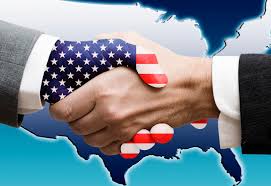The U.S. is the world’s second-largest importer according to the World Integrated Trade Solution. It is given this title because it imported $3.1 trillion in 2019. That features $2.5 trillion in merchandise and $597 billion in services.
In this blog, you’ll be provided with top classifications, opportunities and challenges you’ll need to know as a U.S. importer.
Top U.S. Imports
The largest U.S. import class is capital merchandise at $678 billion. Businesses import $131 billion in computers and connected instrumentation. They additionally import $117 billion in telecommunications and semiconductors.
The consumer merchandise class is sort of as giant at $654 billion. Most of this is often prescribed drugs ($149 billion) and cell phones/TVs ($132 billion). Next is attire and footwear ($130 billion).
U.S. makers import $522 billion of commercial provides. Of this, $191 billion is oil and oil merchandise. The U.S. additionally imports $376 billion value of vehicles and $151 billion in food and feedstock.
Services could be a giant and growing class. In 2019, U.S. service imports totaled $588 billion. Nearly half was travel and transportation services at $262 billion. The next was computer services and alternative business services at $161 billion. Finance and insurance services were $84 billion. the govt. services class was $24 billion.
More than 1/2 U.S. imports come from 5 countries: China, Canada, Mexico, Japan, and Germany. These imports still rise despite President Donald Trump’s trade war.
Key Takeaways
- As the world’s second-largest importer, the U.S. is burdened with a large trade deficit.
- Although the U.S. is capable of producing the majority of its imports, it gets far better costs once shopping for from alternative countries.
- President Trump imposed higher tariffs on U.S. commercialism partners like China and Canada in a shot to lower the U.S. deficit.
- The U.S. economy’s reliance on imports has caused giant losses in American jobs, particularly in producing.
Blame Imports for the deficit
The U.S. imports more than it exports. in step with the U.S. Census, that makes a deficit of $485 billion. even If America exports billions in oil, trade goods, and automotive merchandise, it imports even additional of these same classes.
Low-Cost Imports value U.S. Jobs
Obviously, everything that’s imported isn’t created in America. For that reason, a deficit will increase U.S. state.
The biggest modification occurred with the expansion of imports from China. In 2007, twenty eighth of all imports were from China and alternative low-income countries. This was a dramatic rise from 2000 once this price was solely 15%.
Also read about How to Get a Job without a Social Security Number in the U.S.
At a similar time, the U.S. was losing producing jobs in step with a study in the American Economic Review. It found that in 2000, quite 100% of the working class worked in producing. By 2007, it had reduced to 8.7%. Not all of these losses were from outsourcing. Some were from the rise in robotics.
The study additionally found that job losses hit some communities more durable than others. The cities and cities that lost out to Chinese competition additionally older higher prices for unemployment compensation, disability payments, health care, and early retirement. A study by Illinois Wesleyan University showed that $1 billion in imports from China reduced U.S. producing by 0.48%.
At a similar time, imports do produce U.S. jobs in transportation, distribution, and selling. as an example, the Heritage Foundation calculable that imports from China created 500,000 of those jobs However it’s unlikely that these job gains offset the job losses in producing.
Why America Imports Such A Lot
Although America will manufacture all it desires, China, Mexico, and alternative rising market countries will manufacture it for fewer. Their value of living is lower, that permits them to pay their employees less. Thus, they’re higher at manufacturing what U.S. shoppers need than American firms might. This is often known as the “theory of comparative advantage.”
Also read about How to Apply for a Green Card in the U.S.
For example, Indian technology firms will pay their employees simply $7,000 a year, abundant under the U.S. salary. In alternative words, there is a trade-off between plentiful U.S. jobs and inexpensive merchandise. That is only one of the ways in which IT outsourcing affects the economy.
Many people say we must always solely get things that are “Made in America.” That may solve the matter providing everybody were willing to pay higher costs.
During his time in workplace, President Trump explored ways in which to force Americans to create this trade-off. He slapped tariffs on imports from numerous countries, together with China. He pulled the U.S. out of the Trans-Pacific Partnership and the North American Free Trade Agreement (NAFTA).
Trump’s renegotiation of NAFTA—known as the U.S.-Mexico-Canada Agreement on trade (USMCA)—took impact July 2020. Time can tell whether or not the renegotiated NAFTA encompasses a significant impact on imports, value of products, or the other economic factors
Also read about How to Gain Permanent Residence in the U.S.
How the U.S. Imports Are A Part of the Balance of Payments
- Current Account
- Current Account Deficit
- U.S. Current Account Deficit
- Trade Balance
- U.S. import and Exports
- U.S. Imports and Exports Summary
-
-
-
- U.S. Imports
U.S. Imports by Year for Prime Five Countries
- U.S. Imports
-
- U.S. Exports
-
-
- Trade Deficit
- U.S. Trade Deficit
-
-
-
- U.S. Trade Deficit by Country
-
-
- U.S. Trade Deficit With China
-
- Capital Account
- Financial Account

